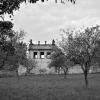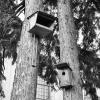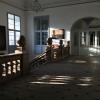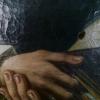Blog posts
Posts
A Hackers Manifesto, verze 4.0, kapitola 4.
By samotar, 10 January 2023
Alfred ve dvoře čili Poznámka k pražské hetero-utopii
By samotar, 10 November 2022
Trnovou korunou a tankem do srdíčka
By samotar, 2 July 2022
Hakim Bey - Informační válka
By samotar, 26 March 2022
Jean-Pierre Dupuy: Do we shape technologies, or do they shape us?
By samotar, 6 March 2022
Václav Cílek: Záhada zpívající houby
By samotar, 15 February 2022
Guy Debord - Teorie dérive
By samotar, 21 January 2022
Jack Burnham – Systémová estetika
By samotar, 19 November 2021
Poznámka pod čarou k výstavě Handa Gote: Věc, nástroj, čas, fetiš, hygiena, tabu
By samotar, 13 July 2021
Rána po ránech
By samotar, 23 May 2021
Na dohled od bronzového jezdce
By samotar, 4 March 2021
Z archivu:Mlha - ticho - temnota a bílé díry
By samotar, 7 October 2020
Zarchivu: Hůlna-kejdže
By samotar, 7 September 2020
Center for Land Use Interpretation
By samotar, 18 June 2020
Dawn Chorus Day - zvuky za svítání
By samotar, 30 April 2020
Z archivu: Bílé Břehy 2012 a Liběchov 2011
By , 3 April 2020
Z archivu: Krzysztof Wodiczko v DOXU
By samotar, 26 March 2020
GARY SNYDER: WRITERS AND THE WAR AGAINST NATURE
By samotar, 20 March 2020
Podoby domova: hnízda, nory, doupata, pavučiny, domestikace a ekologie
By samotar, 17 March 2020
Michel Serres: Transdisciplinarity as Relative Exteriority
By samotar, 5 November 2019
Pavel Ctibor: Sahat zakázáno
By samotar, 22 September 2019
Emmanuel Lévinas: HEIDEGGER, GAGARIN A MY
By samotar, 19 September 2019
Atmosférické poruchy / Atmospheric Disturbances - Ustí nad Labem
By samotar, 13 September 2019
Erkka Laininen: A Radical Vision of the Future School
By samotar, 10 August 2019
Anton Pannekoek: The Destruction of Nature (1909)
By samotar, 21 July 2019
Co padá shůry - světlo, pelyněk, oheň a šrot
By samotar, 30 December 2018
2000 slov v čase klimatických změn - manifest
By samotar, 2 November 2018
Vladimír Úlehla, sucho, geoinženýrství, endokrinologie, ekologie a Josef Charvát
By samotář, 22 September 2018
Lukáš Likavčan: Thermodynamics of Necrocracy - SUVs, entropy, and contingency management
By samotar, 20 July 2018
Tajemství spolupráce: Miloš Šejn
By samotar, 27 June 2018
Invisible Images (Your Pictures Are Looking at You) Trevor Paglen
By samotar, 2 June 2018
KŘEST KNIHY KRAJINA V POZORU: THE LANDSCAPE IN FOCUS.
By samotar, 18 May 2018
Případ zchudlé planety:Vojtěch Kotecký
By samotar, 22 April 2018
Rozhovor na Vltavě: Jak umění reaguje na dobu antropocénu?
By samotar, 10 March 2018
Skolt Sámi Path to Climate Change Resilience
By samotar, 10 December 2017
Brian Holmes: Driving the Golden Spike - The Aesthetics of Anthropocene Public Space
By samotar, 22 November 2017
Ohlédnutí/Revisited Soundworm Gathering
By samotař, 9 October 2017
Kleté krajiny
By samotar, 7 October 2017
Kinterova Jednotka a postnatura
By samotař, 15 September 2017
Ruiny-Černý trojúhelník a Koudelkův pohyb v saturnských kruzích
By samotar, 13 July 2017
Upsych316a Universal Psychiatric Church
By Samotar, 6 July 2017
Miloš Vojtěchovský: Krátká rozprava o místě z roku 1994
By milos, 31 May 2017
Za teorií poznání (radostný nekrolog), Bohuslav Blažek
By miloš vojtěchovský, 9 April 2017
On the Transmutation of Species
By miloš vojtěchovský, 27 March 2017
Gustav Metzger: Poznámky ke krizi v technologickém umění
By samotař, 2 March 2017
CYBERPOSITIVE, Sadie Plant a Nick Land
By samotař, 2 March 2017
Ivan Illich: Ticho jako obecní statek
By samotař, 18 February 2017
Dialog o primitivismu – Lawrence Jarach a John Zerzan
By samotar, 29 December 2016
Thomas Berry:Ekozoická éra
By samotař, 8 December 2016
Jason W. Moore: Name the System! Anthropocenes & the Capitalocene Alternative
By miloš vojtěchovský, 24 November 2016
Michel Serres: Revisiting The Natural Contract
By samotař, 11 November 2016
Best a Basta době uhelné
By samotař, 31 October 2016
Epifanie, krajina a poslední člověk/Epiphany, Landscape and Last Man
By Samotar, 20 October 2016
Doba kamenná - (Ein, Eisen, Wittgen, Frankenstein), doba plastová a temná mineralogie
By samotař, 4 October 2016
Hledání hlasu řeky Bíliny
By samotař, 23 September 2016
Harrisons: A MANIFESTO FOR THE 21ST CENTURY
By , 19 September 2016
T.J. Demos: Anthropocene, Capitalocene, Gynocene: The Many Names of Resistance
By , 11 September 2016
Bratrstvo
By samotař, 1 September 2016
Neptunismus a plutonismus na vyhaslé sopce Bořeň
By , 14 August 2016
Murray Bookchin: Toward an Ecological Society/ K ekologické společnosti (1974)
By samotař, 31 July 2016
Metafory, endofyzika, manželé Themersonovi a Gordon Pask
By samotař, 15 July 2016
Anima Mundi Revisited
By miloš vojtěchovský, 28 June 2016
Simon A. Levin: The Evolution of Ecology
By samotař, 21 June 2016
Anna Remešová: Je možné představit si změnu?
By samotar, 20 June 2016
Jan Hloušek: Uranové město
By samotař, 31 May 2016
Josef Šmajs: Složí lidstvo zkoušku své racionální dospělosti?
By samotař, 20 May 2016
Manifest The Dark Mountain Project
By Samotar, 3 May 2016
Pokus o popis jednoho zápasu
By samotar, 29 April 2016
Václav Cílek: Antropocén – velké zrychlení světa
By Slawomír Uher, 23 April 2016
Nothing worse or better can happen
By Ewa Jacobsson, 5 April 2016
Real Reason we Can’t Stop Global Warming: Saskia Sassen
By , 18 March 2016
The Political Economy of the Cultural Commons and the Nature of Sustainable Wealth
By samotar, 12 March 2016
Jared Diamond - Easter's End
By , 21 February 2016
Felix Guattari - Three Ecologies (part 1)
By , 19 February 2016
W. H. Auden: Journey to Iceland
By , 9 February 2016
Jussi Parikka: The Earth
By Slawomír Uher, 8 February 2016
Brian Holmes: Extradisciplinary Investigations. Towards a New Critique of Institutions
By Stanislaw, 7 February 2016
Co číhá za humny? neboli revoluce přítomnosti
By Miloš Vojtěchovský, 31 January 2016
Podivuhodný osud polárníka a malíře Julia Payera
By , 23 January 2016
Red Sky: The Eschatology of Trans
By Miloš Vojtěchovský, 19 January 2016
#AKCELERACIONISTICKÝ MANIFEST (14. května 2013)
By samotar, 7 January 2016
The Forgotten Space: Notes for a Film
By , 7 January 2016
Rise and Fall of the Herring Towns:Impacts of Climate and Human Teleconnections
By , 25 December 2015
Hlubinná, temná, světlá i povrchová ekologie světa
By , 22 December 2015
Three short movies: Baroque Duchcov, New Lakes of Mostecko and Lignite Clouds
By Michal Kindernay, 21 December 2015
Lenka Dolanová: Umění mediální ekologie
By , 21 December 2015
Towards an Anti-atlas of Borders
By , 20 December 2015
Pavel Mrkus - KINESIS, instalace Nejsvětější Salvátor
By Miloš Vojtěchovský, 6 December 2015
Tváře/Faces bez hranic/Sans Frontiers
By Miloš Vojtěchovský, 29 November 2015
Josef Šmajs: Ústava Země/A Constitution for the Earth
By Samotar, 28 November 2015
John Jordan: The Work of Art (and Activism) in the Age of the Anthropocene
By Samotar, 23 November 2015
Humoreska: kočky, koulení, hroby a špatná muška prince Josefa Saského
By Samotar, 13 November 2015
Rozhovor:Před věčným nic se katalogy nesčítají
By Samotar, 11 November 2015
Lecture by Dustin Breiting and Vít Bohal on Anthropocene
By Samotar, 8 November 2015
Antropocén a mocné žblunknutí/Anthropocene and the Mighty Plop
By Samotar, 2 November 2015
Rory Rowan:Extinction as Usual?Geo-Social Futures and Left Optimism
By Samotar, 27 October 2015
Pavel Klusák: Budoucnost smutné krajiny/The Future of a Sad Region
By ll, 19 October 2015
Na Zemi vzhůru nohama
By Alena Kotzmannová, 17 October 2015
Upside-down on Earth
By Alena Kotzmannová, 17 October 2015
Thomas Hylland Eriksen: What’s wrong with the Global North and the Global South?
By Samotar, 17 October 2015
Nýey and Borealis: Sonic Topologies by Nicolas Perret & Silvia Ploner
By Samotar, 12 October 2015
Images from Finnmark (Living Through the Landscape)
By Nicholas Norton, 12 October 2015
Bruno Latour: Love Your Monsters, Why We Must Care for Our Technologies As We Do Our Children
By John Dee, 11 October 2015
Temné objekty k obdivu: Edward Burtynsky, Mitch Epstein, Alex Maclean, Liam Young
By Samotar 10 October 2015, 10 October 2015
Czech Radio on Frontiers of Solitude
By Samotar, 10 October 2015
Beyond Time: orka, orka, orka, nečas, nečas, nečas
By Samotar, 10 October 2015
Langewiese and Newt or walking to Dlouhá louka
By Michal Kindernay, 7 October 2015
Notice in the Norwegian newspaper „Altaposten“
By Nicholas Norton, 5 October 2015
Interview with Ivar Smedstad
By Nicholas Norton, 5 October 2015
Iceland Expedition, Part 2
By Julia Martin, 4 October 2015
Closing at the Osek Monastery
By Michal Kindernay, 3 October 2015
Iceland Expedition, Part 1
By Julia Martin, 3 October 2015
Finnmarka a kopce / The Hills of Finnmark
By Vladimír Merta, 2 October 2015
Od kláštera Osek na Selesiovu výšinu, k Lomu, Libkovicům, Hrdlovce a zpět/From The Osek Cloister to Lom and back
By Samotar, 27 September 2015
Sápmelažžat Picnic and the Exploration of the Sami Lands and Culture
By Vladimir, 27 September 2015
Gardens of the Osek Monastery/Zahrady oseckého kláštera
By ll, 27 September 2015
Workshop with Radek Mikuláš/Dílna s Radkem Mikulášem
By Samotářka Dagmar, 26 September 2015
Czech Radio Interview Jan Klápště, Ivan Plicka and mayor of Horní Jiřetín Vladimír Buřt
By ll, 25 September 2015
Bořeň, zvuk a HNP/Bořeň, sound and Gross National Product
By Samotar, 25 September 2015
Já, Doly, Dolly a zemský ráj
By Samotar, 23 September 2015
Up to the Ore Mountains
By Michal, Dagmar a Helena Samotáři , 22 September 2015
Václav Cílek and the Sacred Landscape
By Samotář Michal, 22 September 2015
Picnic at the Ledvice waste pond
By Samotar, 19 September 2015
Above Jezeří Castle
By Samotar, 19 September 2015
Cancerous Land, part 3
By Tamás Sajó, 18 September 2015
Ledvice coal preparation plant
By Dominik Žižka, 18 September 2015
pod hladinou
By Dominik Žižka, 18 September 2015
Cancerous Land, part 2
By Tamás Sajó, 17 September 2015
Cancerous Land, part 1
By Tamás Sajó, 16 September 2015
Offroad trip
By Dominik Žižka, 16 September 2015
Ekologické limity a nutnost jejich prolomení
By Miloš Vojtěchovský, 16 September 2015
Lignite Clouds Sound Workshop: Days I and II
By Samotar, 15 September 2015
Recollection of Jezeří/Eisenberg Arboretum workshop
By Samotar, 14 September 2015
Walk from Mariánské Radčice
By Michal Kindernay, 12 September 2015
Mariánské Radčice and Libkovice
By Samotar, 11 September 2015
Tušimice II and The Vicarage, or the Parsonage at Mariánské Radčice
By Samotar, 10 September 2015
Most - Lake, Fish, algae bloom
By Samotar, 8 September 2015
Monday: Bílina open pit excursion
By Samotar, 7 September 2015
Duchcov II. - past and tomorrow
By Samotar, 6 September 2015
Duchcov II.
By Samotar, 6 September 2015
Arrival at Duchcov I.
By Samotar, 6 September 2015
Poznámka k havárii rypadla KU 300 (K severu 1)
By Samotar, 19 August 2015
Gardens of the Osek Monastery/Zahrady oseckého kláštera
Early on a Saturday morning, after the Meeting at The Osek Monastery, I wander the gardens of the 12th-century monastery complex in Osek u Duchcova, in the north of Bohemia. As I step outside, the humid morning air parts to embrace me with its chill. The greenery drips with a drenching dew, and this gathered moisture is also reflected above in the overcast sky. The leather of my shoes darkens with the accumulated wetness as my feet shuffle through the unkempt grass.
The bounty of autumn is everywhere in the orchard, apple trees are heavy with uncollected fruit, and I taste several of them and find that there are not less than three varieties of apples growing here, tasting sometimes of honey, sometimes of wine, or even hinting of rose. But they are late apples, perhaps left too long on the tree, too dense and hard to eat.
Further testifying to the fertility of this place and its abundance, a small flock of sheep grazes in a nearby field, but a wire fence keeps me from going any closer. They look up at me as I pass, but they don’t stop chewing, their breakfast being far more important to them than any passing stranger.
The gardens of the estate seem vast, but are hemmed in by walls that create an enclosure for the yards, the orchards, the pools, the workshops and the storage sheds. Some of these walls are made of raw stone knitted together in a chaotic matrix, characteristic of that certain period of wall building. Others are put together from orderly brick logically arranged in rectilinear expanses. The length of a stuccoed wall next to a highway (I know the road is there because I can hear the passing sound of the occasional solitary vehicle) is divided by a portal gate that leads out.
In the wan misty light of early morning, the sun appears as a fine white disc, still hanging low in the sky. In the enclosed space are arranged, not only the convent and church and its formal courtyards, but also several ruins, and I find stone stairways disappearing into the grass, seldom-used walkways, and other baroque pieces rendered poignant by their now run-down elegance. I discover a small chapel and step inside. It’s a bit grimy, but generally in good condition. A statue of a bare-chested man, a martyr probably, stretches out his hand, offering me a skull.
I had arrived in Osek the previous afternoon with friends to take part in the final evening of the project. After we are assigned rooms to spend the night, I wander the corridors of the monastery for a time, inspecting the many paintings hanging on the walls, consisting of religious scenes, mainly, and portraits of church patriarchs. I admire the play of late afternoon light as it pours in from tremendous windows in broad diagonal shafts, asserting their hold on space as if they were solid bodies. The streaming light is modulated by baroque balustrades, reflecting glass, and other furnishings, which throw their own images on the surrounding walls, their forms visibly resonating by means of a regiment of distorted shadows. I listen, too, to the sounds made by my own movements in the building.
That evening, the project organizers had arranged an organ recital in the main church of the complex, the Church of the Assumption of the Virgin Mary (Klášterní kostel Nanebevzetí Panny Marie). Built in the romanesque style in the 12th century, like so many old buildings in the Czech Republic, it was redone in the baroque style in the 18th. The vast interior of the church boasts two organs, a large one over the narthex, and a small one in one of the transepts. The recital was performed on the smaller organ, as partially documented in this recording.
Altered Landscape, Lives and Memory: A walk from Osek to the sites of the vanished villages of Libkovice and Hrdlovka
Walking could turn out to be the best way to understand a place. Even the natural sciences and the humanities aim to explore the countryside, but they use different methods. For example, the foundations of a spatial archeology were laid right here, because of the extraordinary happenstance of removing the entire surface of the soil in such a broad scale, thereby discovering ancient settlements. You need not be a scientist to understand what is going on here: “How many times they have changed the course of the river Bílina?”
Together with the archaeologist Petr Meduna, art historian Radoslava Schmelzová and biologist Jiří Sádlo we will visit several locations around the village of Libkovice (Liquitz), today merely a small fragment of a brutally exploited urbanized territory. Libkovice was the last coherent urban settlement destroyed because of a planned expansion of a coal mine in 1992. However, the mining there has never begun--and maybe never will. What remains is a devastated landscape, people's lives and historical memory. A short recapitulation after twenty years: How is this different from the fate of Lidice? The landscape of the lignite basin of northwestern Bohemia still belongs among the most devastated regions in Europe. Regardless who is in power, it seems.
The Landscape of Eternal Unrest
Today Libkovice is part of Mariánské Radčice. The cadaster of Libkovice has been systematically studied by archaeologists since the 1970s. Along with records of earlier findings, the archaeological record provides a detailed picture of the development of human settlements since the Neolithic Age, through its entire history. Libkovice itself was founded in the early Middle Ages (the oldest documents are from the 9th-10th centuries.) Since 1240, it has belonged to the Osek Monastery.
Our walk through this “sad country” (as it was once called by the famous photographer Josef Sudek), starts in the architecturally unique Osek Monastery complex, founded by a local noble family named Hrabišic at the end of the 12th century. The Cistercians moved here from the (now defunct) monastery Mašťov in Doupovské mountains. The development of the monastery in the 14th century drew income from the vast estates and from the silver and tin mines of the Ore Mountains .
The monastery was rebuilt in the spectacular way of the high Baroque (1712-1718) by an architect of Italian origin named Octavio Broggio (1670-1742), who was active in the Litomeřice region. The monastery barely escaped the secularization of Joseph II, and in the 19th century, with the process of industrialization and coal mining, it became, temporarily, the site of mayor’s office for the town of Osek.
We will visit the monument to the victims of the Nelson mine disaster, which will recall a post-industrial “ghost story”. We will climb the quartzite rock outcropping called teh Salesius heights, named after the Osek abbot Salesius Krügner, who was a lover of nature in the Ore Mountains.
Biologist Jiří Sádlo will ask questions about how the local landscape is being restored: Can we call it still nature or not? How does it fit in with the ancient landscape of the Ore mountains? We will pass through the village of Lom, today a small town with mining colonies and a unique atmosphere.
Panoramic vistas over the lignite mines can be interpreted as a parable about anthropocentrism, egocentrism, and the dark sides of humanity.
Meeting point: Information Centre of the Osek monastery at 10am.
Duration: all-day walk (max. 15 km).
Recommended equipment: wear sturdy shoes, bring snacks (there will not be a chance to buy food until the final stop in Mariánské Radčice).
For more information please contact Dagmar Šubrtová: dasas@email.cz
…


















































